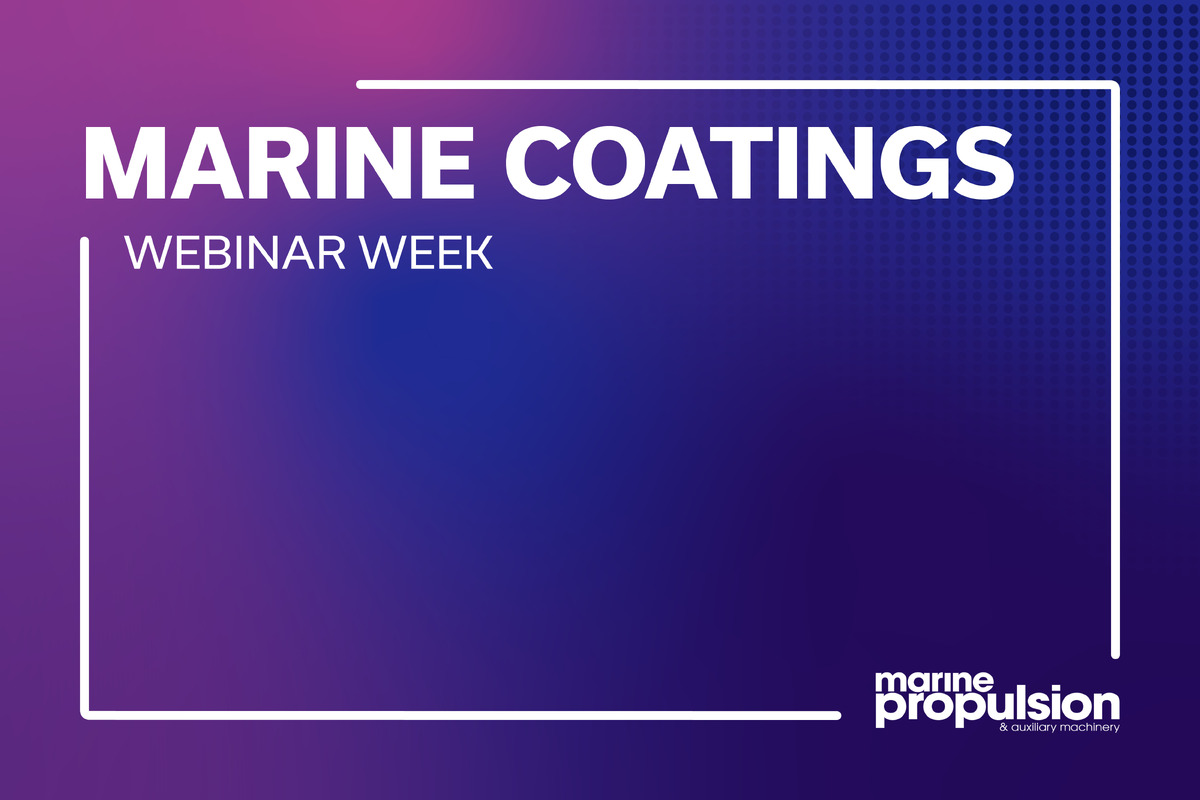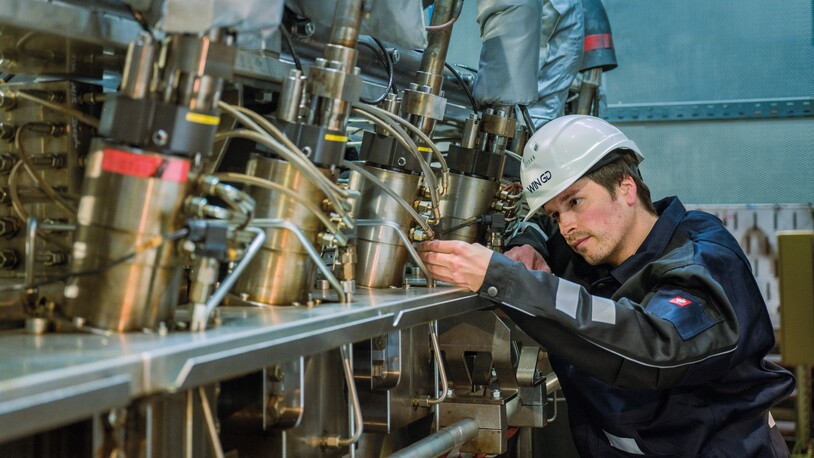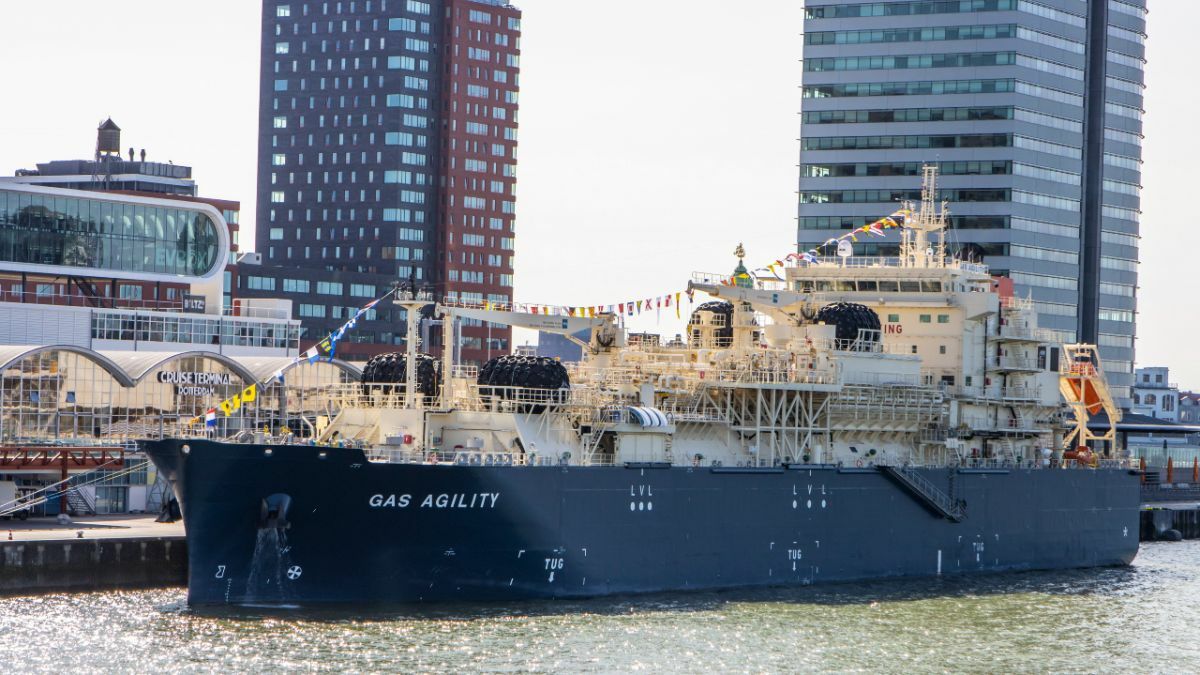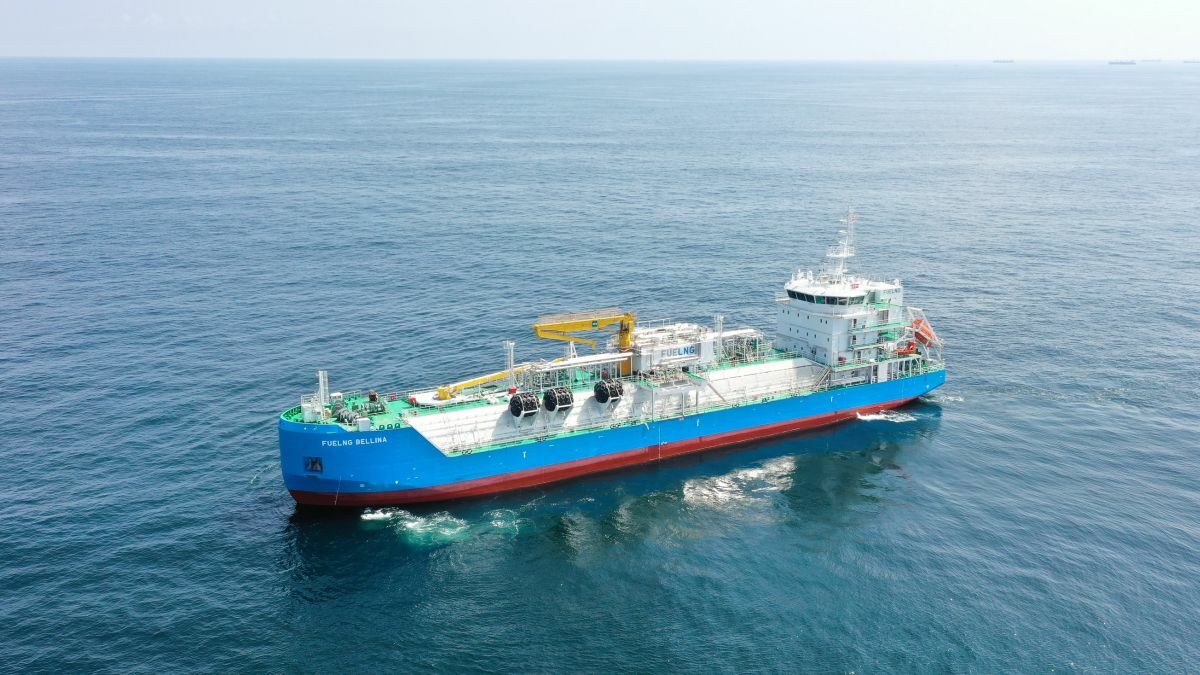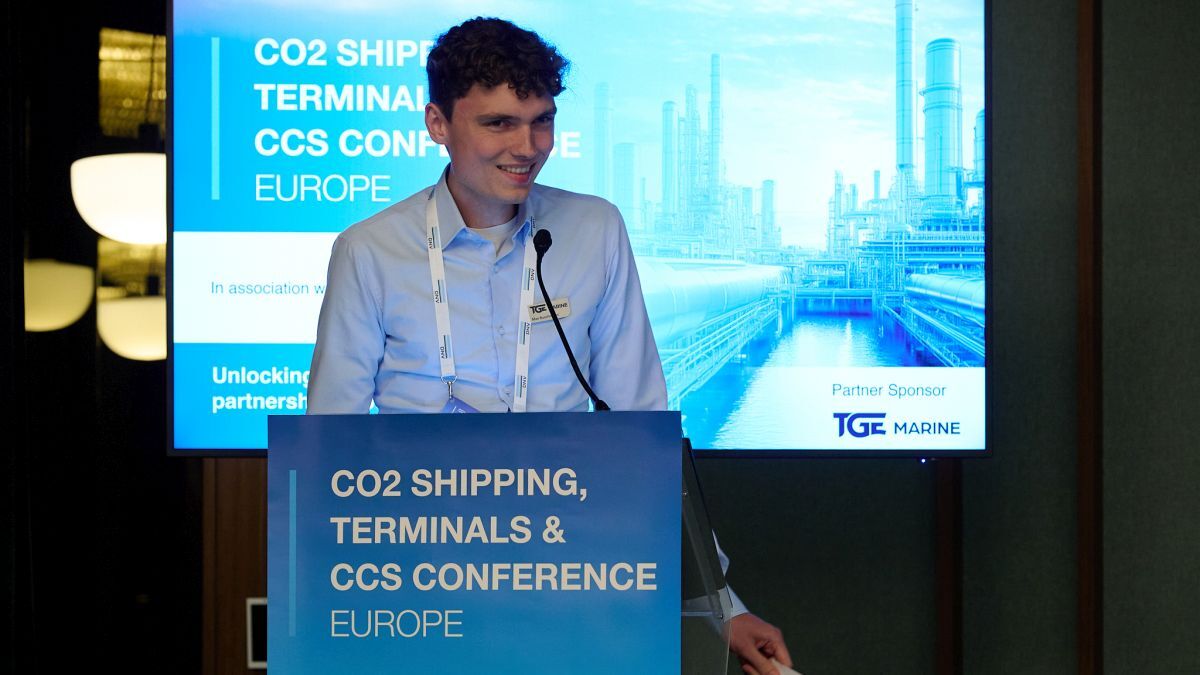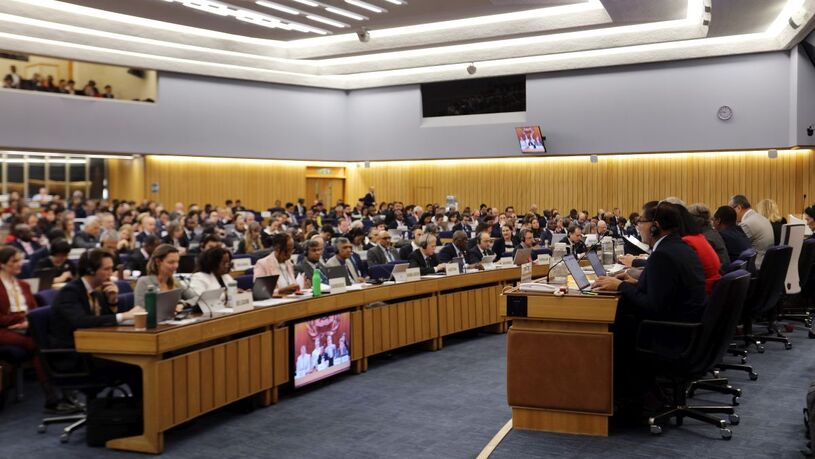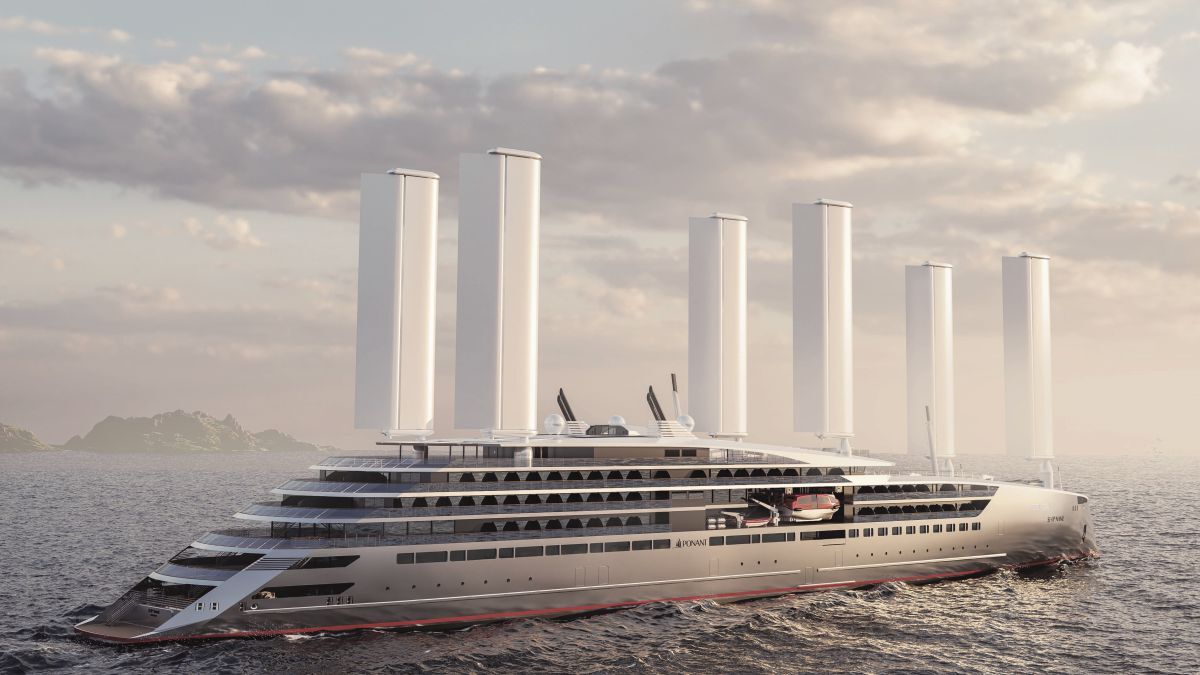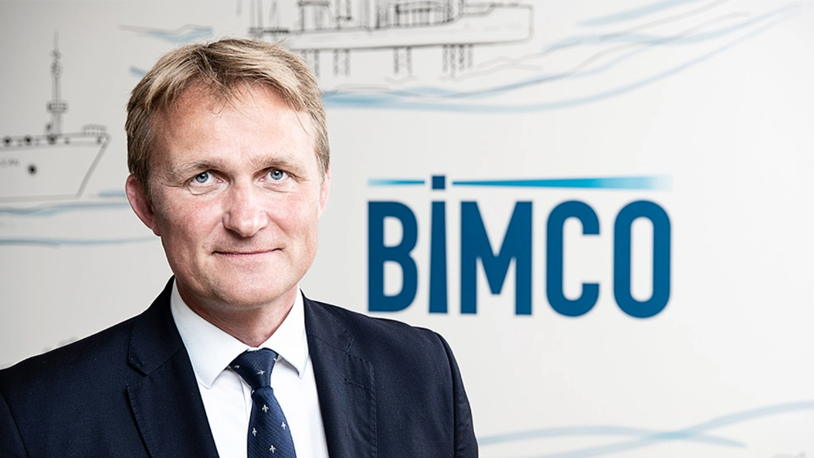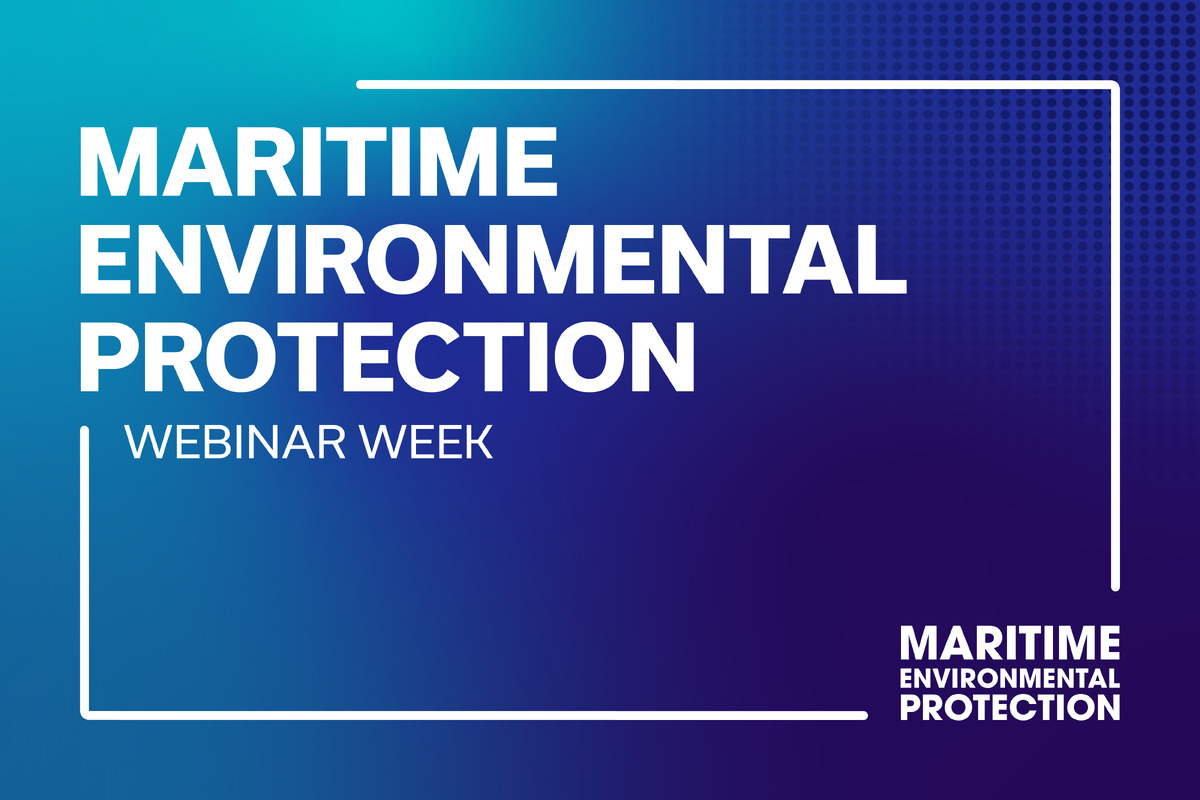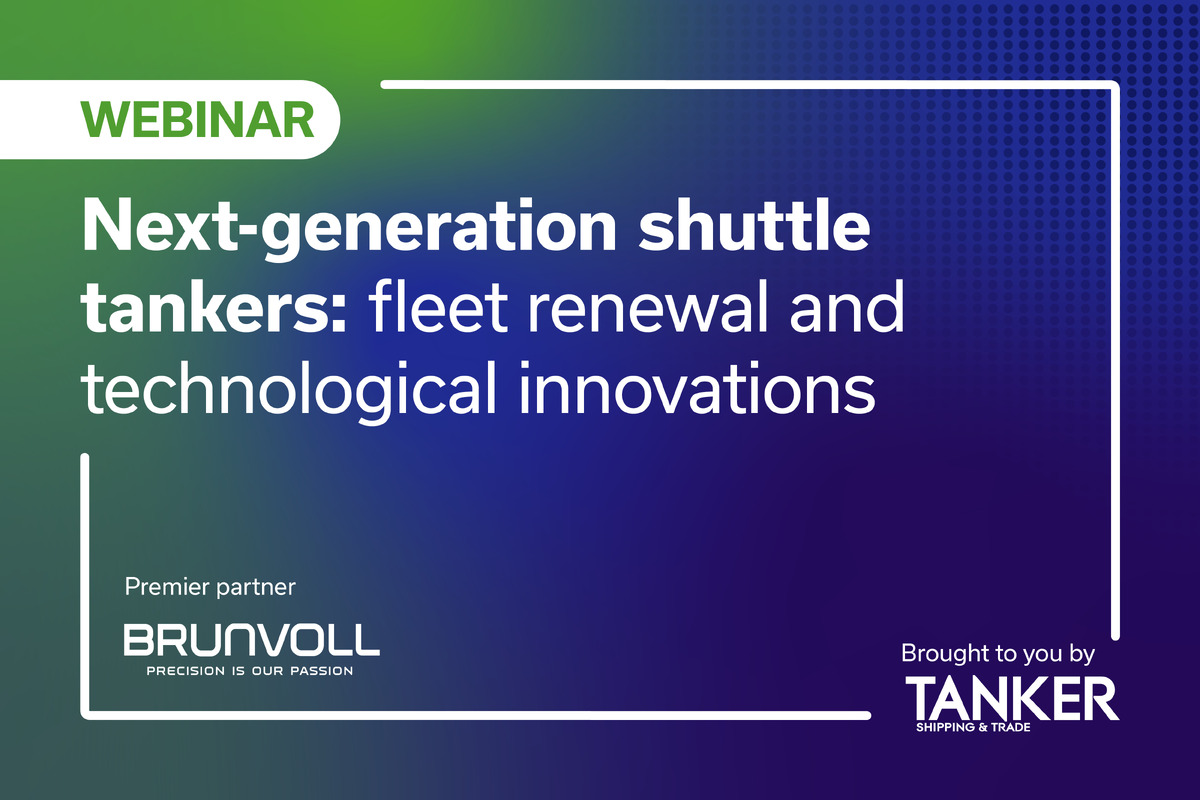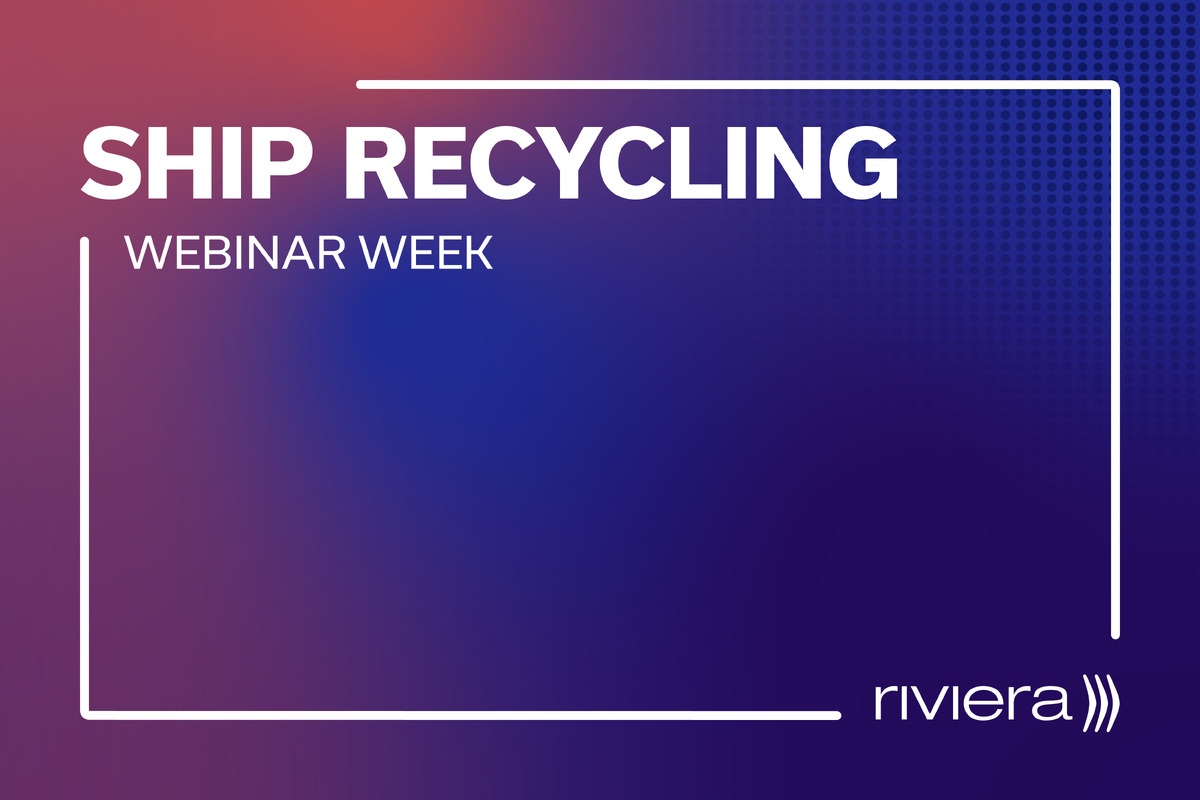Business Sectors
Events
Marine Coatings Webinar Week
Contents
LNG bunkering trio builds bridge to decarbonisation
Three new large-capacity LNG bunker vessels are significant pieces in shipping’s path to zero emissions
One of two pathways to meeting IMO’s greenhouse gas (GHG) emissions reduction targets envisioned by Japanese maritime stakeholders involves expanding the use of LNG as a bunker fuel and transitioning to carbon-recycled methane.
Compared to operating on heavy fuel oil, the environmental benefits of using LNG as fuel are significant. LNG virtually eliminates SOx and particulate emissions, reduces NOx by about 80% and CO2 by 30%. Replacing LNG in the fuel mix with carbon-recycled methane, in combination with the other operational and technological improvements, would allow international shipping to phase out GHG entirely before the end of the century, according to research carried out in a study.
Undertaken by a broad collaboration between Japanese shipowners, shipbuilders, researchers, government and academia, the comprehensive study, Roadmap to Zero Emission from International Shipping, released earlier this year, outlines a ‘business-as-usual’ pathway that would allow LNG-fuelled ships to meet IMO’s 50% reduction of GHG emissions by 2050 and the phasing out of GHG before 2100 through various operational (pursued under EEDI and EEXI) and technological means. These technological improvements would cover use of onboard CO2 capture, batteries, wind propulsion, and alternative fuels. The study projects increasing use of future fuels such as hydrogen, ammonia and carbon-recycled methane. A synthetic fuel produced from captured CO2 and hydrogen, carbon-recycled methane – with similar chemical properties to LNG – would be used as a ‘drop in’ fuel into existing LNG-fuelled ships and LNG bunkering infrastructure.
The study assumes that construction of infrastructure for hydrogen and ammonia fuels will not advance considerably, despite the increased use of LNG-fuelled ships and the expansion of infrastructure for supplying LNG fuels. In this case, nearly 75% of energy consumption in international shipping in 2050 will be supplied by LNG fuels, carbon-recycled methane or biomethane fuels, while around 10% will be by hydrogen or ammonia fuels. Additionally, some 20% of LNG-fuelled ships will introduce onboard CO2 capturing systems. These measures will enable the achievement of the 2050 target.
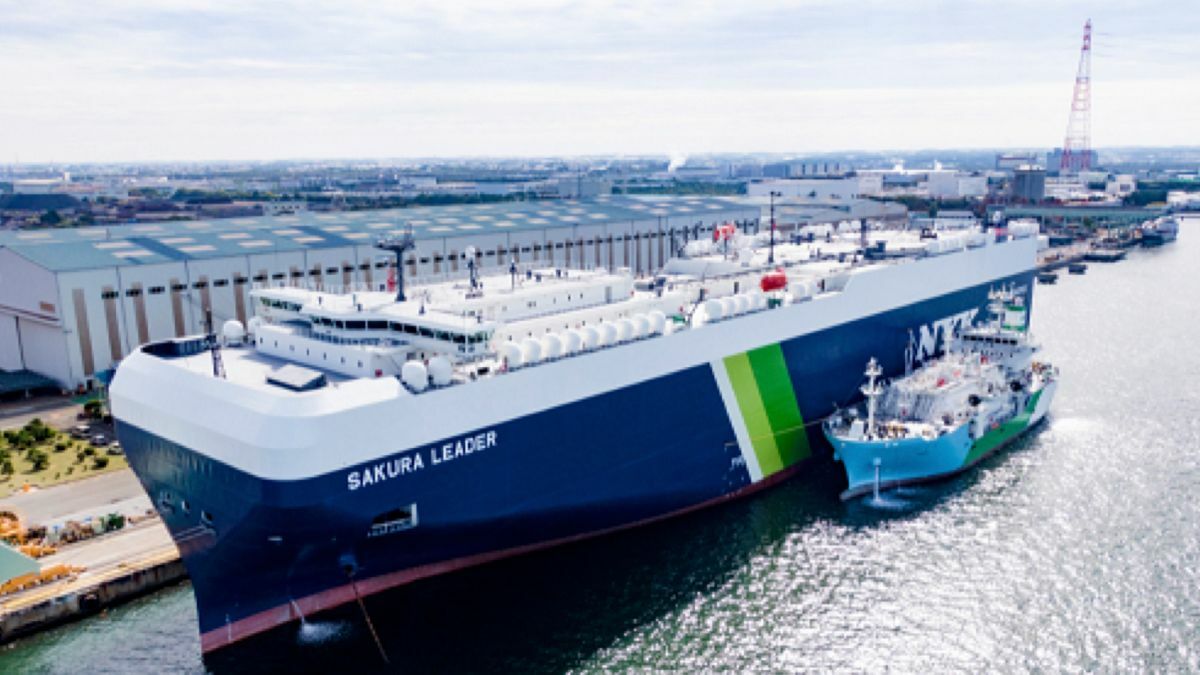
Japan’s first LNGBV
For this pathway to become viable, however, Japan – the world’s largest importer of LNG and a significant shipowner and charterer – must invest in LNG bunkering infrastructure, one of the many critical pieces of the enormous technological puzzle.
And this is happening. In October, Japan’s first LNG bunker vessel (LNGBV), Kaguya, performed its first ship-to-ship (STS) transfer, refuelling a pure car truck carrier (PCTC) at the berth of Shin Kurushima Toyohashi Shipbuilding Co Ltd. NYK’s Sakura Leader, the PCTC that received the LNG fuel, is the first large LNG-fuelled ship to be built at a shipyard in Japan. Once in service, Sakura Leader will be one of the largest PCTCs in the world, capable of transporting approximately 7,000 vehicles.
Built by Kawasaki Heavy Industries, Kaguya is operated by Central LNG Marine Fuel Japan Corporation, a joint venture between NYK, Kawasaki Kisen Kaisha, Ltd (K-Line), JERA Co, Inc, and Toyota Tsusho Corporation – the trading arm of the Toyota Group. Based at JERA Kawagoe Thermal Power Station, Kaguya will bunker LNG to ships in the Chubu region.
NYK has been making an active effort to realise environmentally friendly transportation by reducing GHG emissions.
NYK Lines has been involved in several LNG milestones, among them are: Japan’s first LNG-fuelled vessel, the tugboat Sakigake, delivered in 2015; Auto Eco, the world’s first LNG-fuelled PCTC in Europe, delivered in 2016; Engie Zeebrugge, the world’s first purpose-built LNG bunkering vessel which entered operation in 2017; and the world’s first large LNG-fuelled coal carrier, scheduled for delivery in 2023.
Kaguya has an overall length of 81.7 m, beam of 18 m, depth of 7.8 m, draught of 4.8 m, and capacity of 3,500 m3.
Japan’s largest power producer, JERA, will purchase LNG for Central LNG Marine Fuel Japan, which will be the supplier and operator of the LNG bunker vessel. Kaguya will be owned and managed by Central LNG Shipping Japan Corporation.
World’s largest LNG bunker vessel
Japanese investment also played a role in the construction of the world’s largest LNG bunker vessel. Named at a ceremony in Rotterdam in April, Gas Agility is owned by Emerald Green Maritime Limited, a wholly owned subsidiary of Japan’s Mitsui OSK Lines.
MOL executive vice president Takeshi Hashimoto called Gas Agility a “great milestone and the turning point in this rapidly changing world.” Mr Hashimoto said: “The transition from heavy fuel oil to LNG is competitive, environmentally efficient and an immediately available solution for maritime transportation. By providing the capacity to deliver LNG as a marine fuel, this partnership will be the leader in transitioning to a more fuel-efficient industry.”
“The transition from heavy fuel oil to LNG is competitive, environmentally efficient and an immediately available solution”
Co-financed by the Connecting Europe Facility of the European Union, Gas Agility, with a capacity of 18,600 m3, will support CMA CGM’s nine 23,000-TEU, dual-fuel container ships, including the recently delivered CMA CGM Jacques Saadé.
In an historic agreement in 2017, the French container shipping giant inked a 10-year deal with Total for an unheard of volume of 300,000 tonnes per year of LNG.
Gas Agility is part of Total’s “ongoing drive to develop key logistical LNG infrastructure in the main bunkering hubs around the world, helping the shipping industry make the move to a more sustainable fuel solution,” according to TMFGS managing director Jérôme Leprince-Ringuet. TMFGS – Total Marine Fuel Global Solutions – is an affiliate of Total, which has one of the world’s largest LNG portfolios.
Total is clearly committed to expanding the use of LNG as a marine fuel, inking another long-term deal with CMA CGM to supply 270,000 tonnes per year of LNG over 10 years. This volume will cover the supply at Marseille-Fos of CMA CGM’s 15,000-TEU container ships, which will operate between Asia and the Mediterranean starting in 2021.
A sister vessel to Gas Agility, under construction at Hudong-Zhonghua Shipbuilding for delivery in Q4 2021, is being chartered to handle those bunkering duties.
Built with GTT Mark III Flex thin film tanks for a low evaporation rate and full-process service capabilities, the 135-m Gas Agility and its sister vessel have been designed with tank strength to withstand sloshing impact.
Building on lessons learned from Gas Agility, Hudong-Zhonghua Shipbuilding reports it is incorporating “three major design improvements” in its sister ship that will enhance operational performance.
One is a high throughput rate; both the loading and offloading rate have increased by 25%, reducing the refuelling operation time during ship-to-ship transfers.
The second is high compatibility. A new design allows the bunker vessel to service LNG-powered vessels with IMO type A, B, C, or membrane-type LNG fuel tanks.
The third is fuelling flexibility. High and low double filling headers allow connection with LNG-powered ships of different sizes. The bunker vessel can provide full-process services for various types of LNG-powered ships, including small ferries, bulk carriers, very large tankers (VLCC), very large container ships and cruise ships, covering refuelling demands from 600 to 18,000 m3.
Singapore’s first LNGBV
While not as large as Gas Agility, just as significant is FueLNG Bellina. Named in a ceremony in Singapore in September, FueLNG Bellina, a 7,500-m3 capacity LNG bunkering vessel, will not be the first LNG bunkering vessel in Southeast Asia; that honour belongs to Avenir Advantage, which has been delivered for a three-year charter with Malaysia’s Petronas LNG.
However, FueLNG Bellina will be Singapore’s first LNGBV when it enters service in Q4 2020. Owned by FueLNG, a joint venture between Keppel Offshore & Marine Ltd and Shell Eastern Petroleum (Pte) Ltd, FueLNG Bellina will be the first to provide regular STS LNG bunkering services within the Singapore port. FueLNG will also provide LNG bunkering from Singapore’s first dedicated LNG bunkering facility, which will be built by Keppel O&M on its Floating Living Lab (FLL), with Shell supplying the LNG to the 3,500-m3 capacity facility when it becomes operational in Q4 2021.
Designed by Keppel O&M and built by the Keppel Nantong Shipyard in China, FueLNG Bellina will be highly manoeuvrable, facilitated by two stern azimuth thrusters and one bow thruster. The vessel’s thrusters will allow for ‘crabbing manoeuvres’ during bunkering operations, minimising tug utilisation and in turn reducing fuel consumption and emissions.
With a filling rate of between 100 and 1,000 m3 of LNG per hour, the LNGBV will be able to refuel various types of vessels at heights ranging from 3 m to 23 m above the water level. This is critical to allow fuelling of a wide range of LNG-fuelled vessels in one of the world’s busiest bunkering hubs.
With dual-fuel propulsion, FueLNG Bellina will also utilise boil-off gas (BOG) as fuel for power generation and propulsion, reducing CO2, particulate matter and NOx emissions.
First ‘smart’ LNG bunker vessel
Adding to its credentials, FueLNG Bellina will be the first ‘smart’ LNG bunkering vessel, equipped with a digital platform to monitor and executive the entire bunkering process. Keppel O&M reported that the Singapore-flagged FueLNG Bellina is the world’s first bunkering vessel with Smart Notation; it is equipped with Keppel O&M’s proprietary VesselCare solutions, a remote vessel monitoring and analytics platform for condition-based maintenance and real-time support of vessel operations.
Commenting on the naming ceremony, Singapore Senior Minister of State, Ministry of Transport & Ministry of Foreign Affairs Chee Hong Tat, said: “This occasion marks an important milestone in Singapore’s journey to achieve the IMO 2030 greenhouse gas emissions target. It is our next step towards regular ship-to-ship LNG bunkering activities in Singapore. As we progress towards a low-carbon future we will intensify our efforts to develop the Port of Singapore into a global LNG bunkering hub.”
FueLNG Bellina is a big part of that goal. When operational, the vessel’s first contracts will be to provide STS LNG bunkering to Shell-chartered tankers and for one of Hapag Lloyd’s container vessels.
Hapag Lloyd senior director global fuel purchasing Jan Christensen, said: “We are looking to reducing our carbon emissions, and LNG propulsion in our ships is one of the key contributors. Singapore is a significant port of call and we are pleased that there will be the necessary infrastructure provided by FueLNG for us to bunker our LNG-powered vessels.”
With the addition of FueLNG Bellina, Gas Agility and Kaguya, the global fleet now stands at 19 vessels – with another 20 vessels on order according to DNV GL data – underpinning the further adoption of LNG as a fuel and facilitating shipping’s path towards decarbonisation.
Related to this Story
Events
Marine Coatings Webinar Week
Maritime Environmental Protection Webinar Week
Ship Recycling Webinar Week
© 2024 Riviera Maritime Media Ltd.
